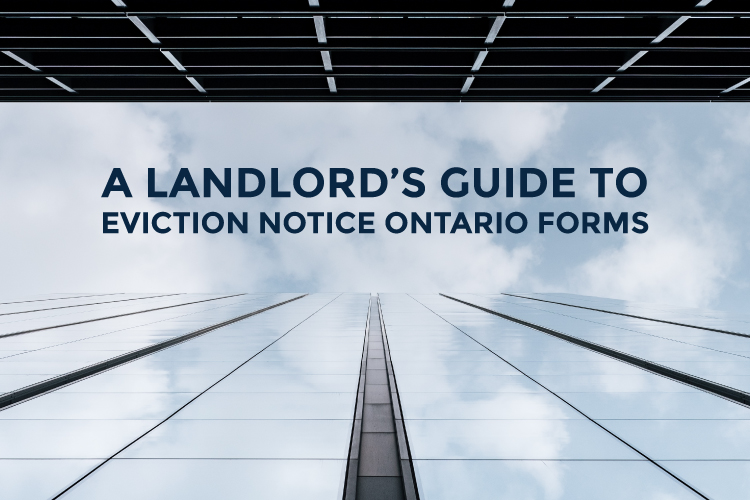

Did you know there are eight — yes, eight — different Ontario notice of eviction forms? While nobody likes dealing with evictions, not all evictions are created equal. Sometimes a landlord needs to evict a tenant for their own personal use or for much-needed renovations to the rental property.
To help you know which form a landlord should use for each unique situation, here is your guide to Eviction Notice Ontario Forms.
A landlord would use an N4 Form if their tenant has not paid their rent on time. If their rent was due on the first of the month, for example, a landlord is permitted to serve them the N4 as early as the second of the month.
It’s important to note that a landlord can only serve this form if the tenant is still living in the rental unit. If the tenant has moved out, you’ll need to take your claim to court.
Once the form is served, the tenant has until the date of termination to pay the outstanding rent. If rent is paid, the form is void and you cannot evict the tenant.
There are three reasons when a landlord may need to serve an N5 form :
If you live in the same building as your tenant and the building has less than three residential units, you’ll need to give your tenant Form N7. You can find more info on that form below.
Once the N5 Form has been given, the tenant has seven days to correct the described behavior. On the eighth day, if no progress has been made, you can apply to evict the tenant.
There are three instances when a landlord may use an N6 Form to evict their tenant(s):
When giving this form to your tenant, be sure to keep a copy for yourself.
There are four reasons when a landlord may use an N7 Form :
If you do not live in the same building as your tenant, use Form N5 instead.
There are a variety of reasons why a landlord may need to serve their tenant an N8 Form which is to end tenancy at the end of the term:
In instances where a landlord would like to move themselves or an immediate family member into the rental property, an N12 Form is to be used. Under these circumstances, the landlord, a member of their immediate family, or a person who will provide care to either of the former must be planning to live in the unit for at least one year.
You cannot give this notice if:
In this case of eviction for personal use, the landlord is required to provide N12 compensation to their tenant. This amount must be equal to one month’s rent or the landlord must offer their tenant another rental property that is acceptable to them. Refer here for full instructions for N12 Compensation and rules .
An N13 Form is used if a landlord is planning to demolish or convert the rental property, or has plans to extensively renovate or repair the rental property and their tenant must vacate in order to do so.
There are lots of stipulations that landlords should know regarding an N13, most notably, that a landlord is required to offer their tenant the right to move back into the rental unit after the renovations are complete for the exact same rental rate they had been paying prior to the renovations. Read our blog What you need to know about evicting tenants for renovations in Ontario for a more in-depth look at this type of eviction.
If the tenant and the landlord have mutually agreed to end the tenancy and none of the other aforementioned forms apply, then the N11 Form is to be used.
While we have done our best to summarize the eviction notice forms here, we encourage you to visit the Landlord and Tenant Board Ontario webpage for the full list of these eviction notice forms and how to use them.
Feel free to contact us with any additional questions.